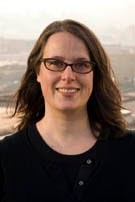The Arts Research Center at UC Berkeley is sponsoring the symposium “Curating People” on April 28 and 29, 2011. Participants have been invited to post some brief thoughts on the topic in advance of the event. This guest posting is by Erin Boberg Doughton, Performing Arts Program Director at the Portland Institute for Contemporary Art (PICA).

I came to PICA through a performance background in theatre, dance and music. Starting on the ground floor of a new organization I was part of a small team working with artists in both visual art and performance. With each project I learned a new set of skills, generally related to connecting artists with the human and/or physical resources they needed to make their work happen, teaming them with designers, technicians and thinkers in our community as well as spaces, materials, and tools. As PICA does not maintain a permanent theatre or gallery, we are fairly flexible with labels and structure. As my role at PICA has changed over the past 15 years I have worked with a series of Artistic Directors and have been sometimes more and sometimes less involved with the curatorial work of researching and inviting artists and putting their work in context with each other and for a public. Curating in that sense is a small fraction of what I do. I spend most of my time on project management, coordinating or producing, although I hesitate to use any of those words as they sound so commercial. The word “presenting” falls short to me because it feels focused on the moment that the curtain opens and the work is revealed – voila! Although I have been the person standing in front of that curtain many times, I feel more at home behind it. I think about the Latin root of curate “to care” as a deep part of what I do and in that case (when I am really living up to my own ideals in my job), it feels right. I feel what I contribute is in service not only to each individual artist but to moving our cultural history forward in small increments that will add up to something meaningful over time. Although I have no formal training as an administrator or curator, (which is typical among my colleagues in the performance field) I have access to a great network of artists, peers and mentors that could be defined as a “learning community.” I spend more time talking with artists and colleagues both formally and informally than writing or cataloging. Critical writing and documentation are areas I would like to expand for myself, for my organization and for the performance field in general. I think the current definitions of presenter/curator/performance/visual, as fluid as they are, don’t really do justice to the complexity of our field and I am interested in helping to find the right language to describe what we do for ourselves and for the public. Like my colleague Kristan I am not so interested in the “vs.” or valuing one over the other, but in defining what each of us do well so that we have the largest possible set of skills and resources available to serve artists as their forms and needs change.
No comments:
Post a Comment